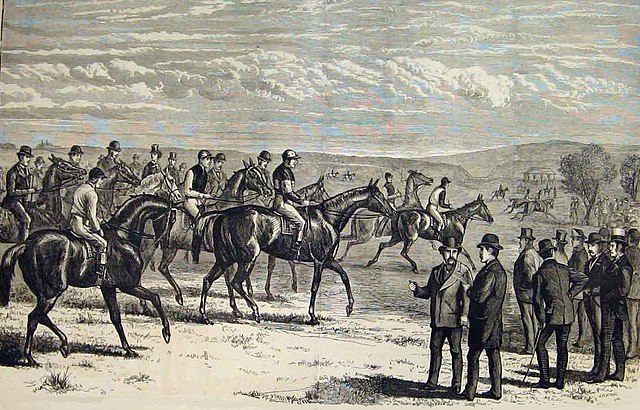Cotherstone (1840–1864) was a British Thoroughbred racehorse and sire. In a career that lasted from September 1841 to July 1843 he ran eleven times and won eight races. After being beaten on his debut, Cotherstone won his next six races including the 1843 2000 Guineas and Epsom Derby. A narrow defeat in the St. Leger Stakes prevented him from being recognised as the first winner of the English Triple Crown. He was regarded by contemporary experts as one of the best British racehorses of his era. After sustaining a serious injury in his only race in 1844 he was retired to stud where he had moderate success.
Cotherstone. Contemporary painting.
John Bowes named his colt after the village of Cotherstone.
Bill Scott called Cotherstone the best colt he ever rode.
Cotherstone with jockey, in the black jacket of John Bowes
The 2000 Guineas Stakes is a Group 1 flat race in Great Britain open to three-year-old thoroughbred colts and fillies. It is run on the Rowley Mile at Newmarket over a distance of 1 mile (1.6 km) and scheduled to take place each year at the start of May.
The Finish of the Two Thousand Guineas at Newmarket by Samuel Henry Alken (1810–1894)
Engraving of the 1874 2,000 Guineas, from the Illustrated Sporting and Dramatic News, May 1874






